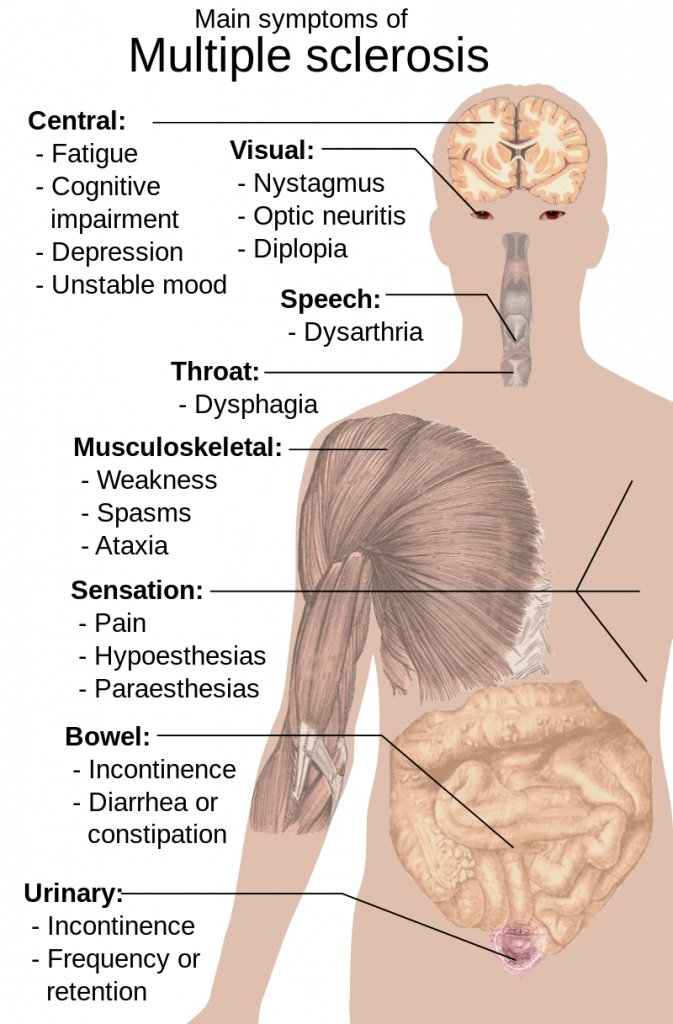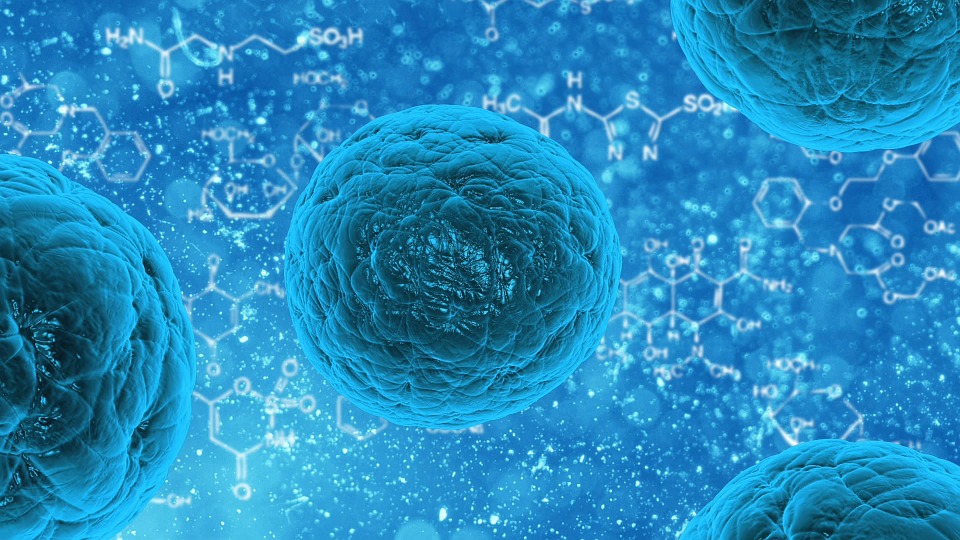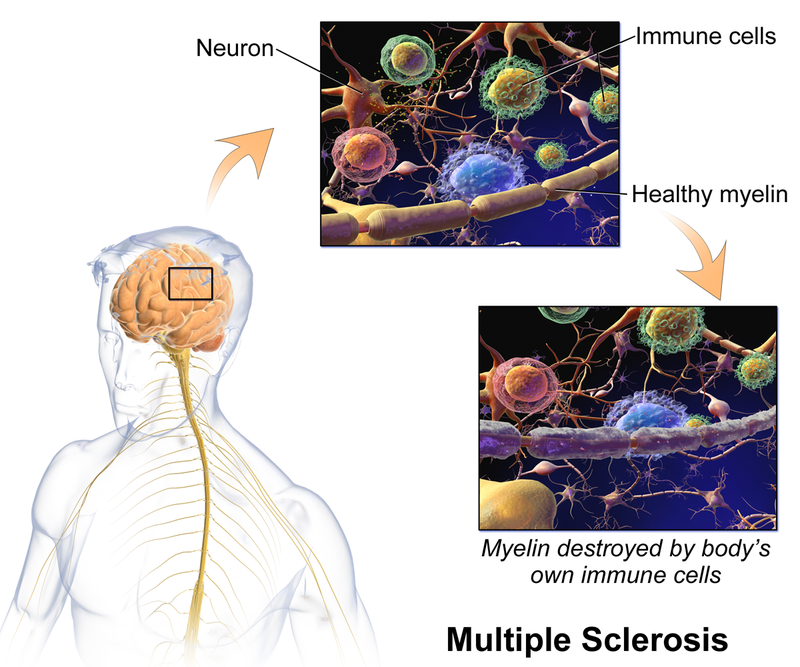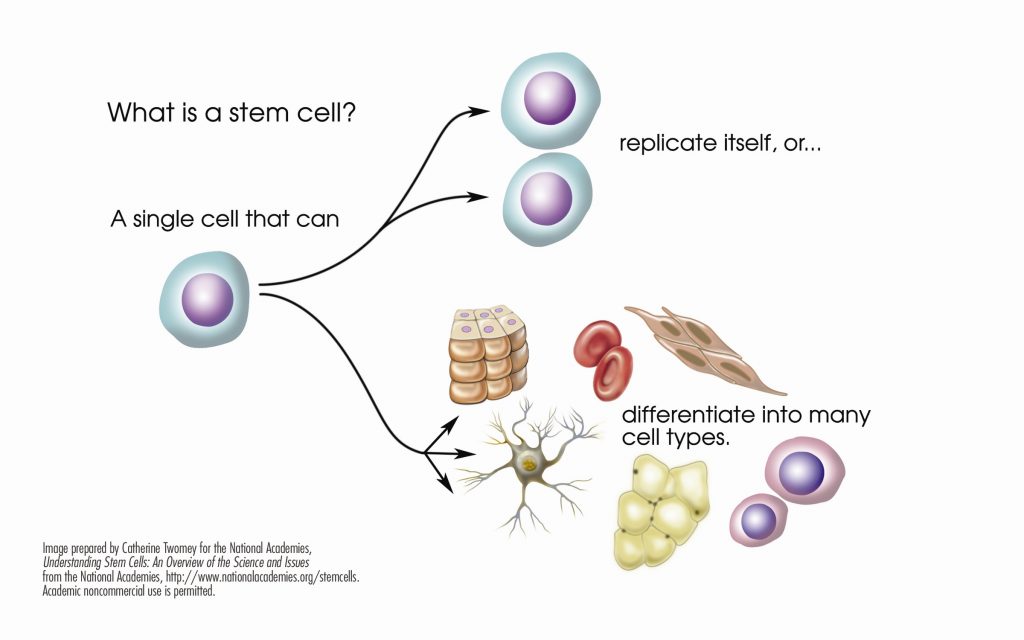Picture yourself in your mid thirties, leading a healthy and successful life. Now imagine you’re at work, or at the grocery store, or at your kids’ soccer game, anywhere really, and out of nowhere, your feet begin to feel numb and tingly. You brush it off for awhile, but after a couple of weeks of this, you begin to worry that something is seriously wrong, especially combined with the excess fatigue and dizziness you’ve been feeling. After taking a fall one day due to the numbness, you’ve finally had enough and head to the doctor, who after a thorough examination, decides to run more tests to confirm a diagnosis of multiple sclerosis (MS).
So, what exactly is multiple sclerosis?
Multiple sclerosis (MS) is a neurological, autoimmune disease that attacks and damages the myelin in your central nervous system. When the myelin, or the protective sheath around your nerve cells, becomes damaged, it can lead to a decrease in neurological function, as the nerve cells will be unable to transmit nervous signals around the body. While MS was discovered in 1868, the cause is still unknown. Scientists believe that genetics, lifestyle, and environmental factors all play a role; however, research is still under way to determine the exact cause.

Credit to Nursing Education Consultants Inc, https://docireport.files.wordpress.com/2013/08/multiplesclerosis.jpg
MS presents itself in a number of ways, and no two cases exhibit identical symptoms. One of the most common symptoms is numbness and tingling in the face or extremities due to a lack of nervous signals from the central nervous system. People with MS also may experience vision problems, muscle spasms, excessive fatigue and whole body weakness, cognitive problems such as forgetfulness, and depression. More extreme symptoms include seizures, breathing problems, and loss of hearing, to name a few. 
There are two types of MS generally seen in patients. The more common of the two, relapsing-remitting MS, causes people to experience symptoms in relapses, followed by a remission period of no symptoms. This type affects about 85% of patients, with about one half to two thirds of them later developing secondary progressive disease, where the MS symptoms slowly become more and more irreversible. The other 15% of people with MS have what is known as primary progressive MS. These people do not experience a relapse and remission; instead, they have constant symptoms that are constantly becoming worse. Pretty scary stuff, huh?
If I do have MS, how do I get better?
Unfortunately, MS does not currently have a known cure. There are several different treatments available, which are used to manage symptoms and slow the disease from progressing further. Corticosteroids can be used reduce inflammation in your nerves, and beta interferons may be used to reduce MS relapses. There are many other drugs available to help reduce symptoms and relapses. Alternative medicine, rehab, and physical therapy can also be used to try and control the disease. While these will help slow the progression, none of these will actually stop MS from occurring. However, fear not – researchers are currently investigating the use of stem cells as a treatment for MS, which will repair the central nervous system and reverse the symptoms.
Stem cell treatment currently shows a great amount of promise for the treatment of MS, among other diseases. It is a controversial strategy though, and it is only approved to be performed in a handful of places, while clinical trials are underway in others. There are several different types of stem cell treatment research occurring currently. The treatment looks to re-kick start the person’s immune system and destroy the harmful cells by injecting stem cells into the body.
Stem cells? What are those?
Stem cells are an incredibly valuable type of cell in our bodies. They have the ability to develop into many different cell types, allowing for the constant replenishment of cells. They begin as unspecialized cells and undergo cell division. After the division, each of the cells can either remain as a stem cell, or become a specialized cell, such as brain cells, bone cells, or blood cells. Stem cells often divide to replace worn out tissues in some organs. Scientists generally look at either embryonic or somatic stem cells for their research. Embryonic stem cells are collected from donors who have undergone in vitro fertilization – they are taken from the developing embryos. Somatic, or adult, stem cells, are found as undifferentiated cells in our tissues and organs. Somatic stem cells appear in two forms, hematopoietic and mesenchymal. The hematopoietic stem cells generally form our blood cells, while the mesenchymal stem cells are in our bone marrow and can form bones, cartilage, and fat. Both hematopoietic and mesenchymal stem cells are currently being tested as different MS treatment options.
How do the stem cell treatments work?
HSCT, or autologous hematopoietic stem cell transplantation, has been being researched for several years now. HSCT involves rebooting the immune system, with the hope that this will help to prevent the immune system from attacking the central nervous system of people with MS. People who undergo HSCT have hematopoietic stem cells removed from their own bone marrow or blood and stored for later use. The patient’s immune system is then wiped out completely through chemotherapy or radiation (hence the controversy – chemotherapy can be extremely hard on your body, and it will cause you to have a very weak immune system while the stem cells are working to rebuild it). The stored stem cells are intravenously re-infused into the patient. They will migrate to the bone marrow, where they will undergo repeated rounds of cell division. The divided cells are then able to differentiate into immune cells, and after some time, the patient’s body will once again have an immune system. The goal of this treatment is that the brand new immune cells will be just that – brand new, and will not attack the central nervous system of the person.
This type of therapy was first thought of byRichard Burt, a hematologist working in Baltimore. After seeing children with leukemia have their immune system destroyed as a form of treatment, he decided to see if it would work for multiple sclerosis. He began years of research and trials, some of which are detailed in a paper he published in 2015. There were many positive outcomes from the people who had undergone HSCT, in all aspects of their health – there was a decrease in disability scores, and an increase in physical health, mental health, and total heath. Overall, people were experiencing an improvement in quality of life.
Here is an example of a man who underwent the HSCT:
There have been several other papers written describing the effects of HSCT on MS, check them out if you want more proof of HSCT’s success!
-
Hematopoietic stem cell transplantation for multiple sclerosis: is it a clinical reality?
- Stem cell therapies in multiple sclerosis – united we stand, divided we fail
-
Hematopoietic stem cell transplantation for multiple sclerosis
Using mesenchymal stem cells (MSC) is another experimental approach to treating MS. In this process, the immune system is not wiped out. Instead, stem cells are collected from the patient and then multiplied, and millions of stem cells are reintroduced into the body. The goal of this method is that the huge amount of stem cells will be able to stop the immune system from destroying the myelin of the CNS, as MSCs appear to be able to repair nervous tissue and stop inflammation. Instead of replacing the immune cells and damaged tissue, the mesenchymal stem cells act to repair. This is different from the current available MS treatments as they try to slow down the disease, not fix it.
The first clinical trial in North America studying the use of mesenchymal stem cells was performed in Boston in 2014. A very small group underwent the procedure, and afterwards they exhibited improvements in their disability scores. They are currently testing the treatment on more patients, but there is definite promise in using mesenchymal stem cells.
The Stem Cell Institute, located in Panama, is a research centre focusing on stem cell therapy. Their research includes using stem cells to treat autism, cerebral palsy, and MS, to name a few. They use mesenchymal stem cells harvested from human umbilical cords, as opposed to stem cells taken from you. They are an approved facility, and have experienced many success stories. The treatment does not cure MS, but it definitely improves life quality.
Check out this inspiring video of a man named Ron McGill, sharing his story with MS and the treatment he received in Panama.
“I feel the infusion of healthy cells gave my body a huge boost to recover the majority of lost motor skills I had experienced. It also helped amplify the lifestyle changes I was already making to give me a faster and more positive result.”
Ron McGill
Final Thoughts
Multiple sclerosis is a terrible disease, and it is crazy to think that no cure has been found in the last 148 years. The developing stem cell therapies, both HSCT and the use of mesenchymal stem cells, show so much promise for treating not only MS, but many other diseases. I personally think that this research is so cool, and hopefully the treatments are able to continue to advance. I really hope that one day this treatment will be more readily approved and available, and that people will no longer have to be afraid of a slowly progressing disease that is destroying their nervous system, but will instead be able to receive the treatment and continue on with their lives.




Recent Comments